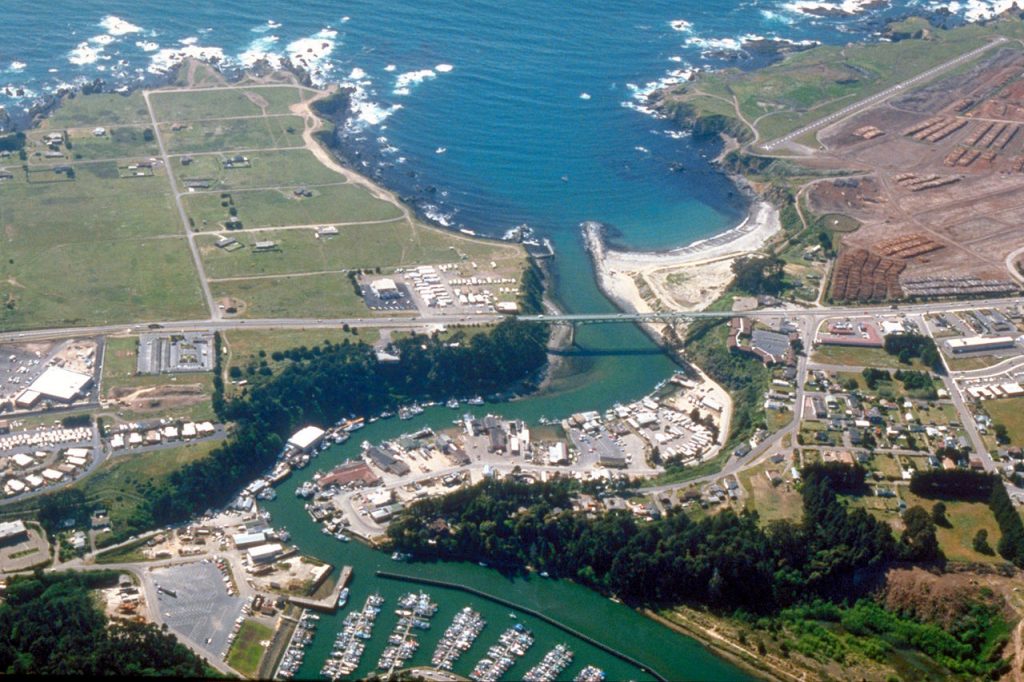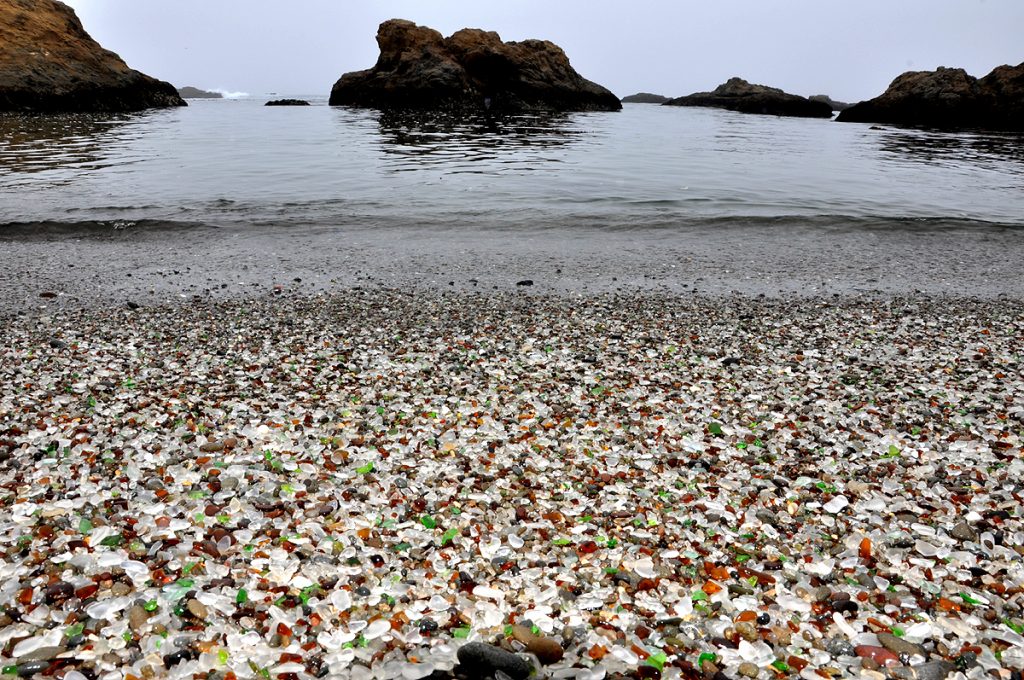How One Generation’s Trash Became Another’s Vacation

Fort Bragg, California, is located in the northern part of the state and on the Pacific Coast. As seen above (via the city’s Wikipedia entry), the city has some pretty spectacular views of the Pacific Ocean, so it’s not surprising that there’s a decent tourism industry there. But one of the main tourist sites isn’t quite as natural as it appears.
Before the 1850s, Fort Bragg and the surrounding regions were home to the Pomo, a tribe of Native Americans. In 1856, the American government set up a reservation in that area and a year later, the government established Fort Bragg as a way to maintain control over the reservation. By 1866, the reservation was no more, the military outpost was abandoned, and Fort Bragg and neighboring areas were opened to settlement by westward-bound Americans. The city became a hub for an emerging lumber industry; lumber mills dotted the landscape and the mouth of the Noyo River, pictured, became a thriving lumber port. In 1891, many of the smaller lumber mills combined into a company called the Union Lumber Company, and effectively, Fort Bragg became a company town.
Over the next 20 years, promises of employment caused Fort Bragg’s population to nearly triple — it jumped from about 900 people per the 1890 census to nearly 2,500 in 1910. And with these extra people came a lot of extra trash — trash that needed a place to go. That proved to be a problem: residents couldn’t dump it on company property, and the company owned most of the land.
The solution was the beach — there was (and is) a coastal area, just over a cliff then-owned by Union Lumber — which was open to the public but hard to get to. So, that’s where the trash went — over the cliff. According to the Los Angeles Times, “most of Fort Bragg used the beach as a dump, leaving tons of garbage, glass, china, [and in later years,] spark plugs and engine blocks to rust and crumble at the edge of the Pacific.” This practice, according to various reports, lasted for decades; the beach even earned the nickname “The Dumps.” (The only effort to reduce the trash pile came in the form of fire — on occasion, locals would light the garbage ablaze to keep it from getting entirely out of control.)
In 1967, the town wised up and established a true municipal dump. Some of the more hazardous waste was removed from the ad hoc beach solution the city had used until then. But other than that, The Dumps were left as-is, with nature left to deal with it. And nature did, resulting in this:

That’s what the beach looks like today (as of July 2015). Can’t tell what’s going on? Here’s a closer image of the “sand.” 
Yes, that’s glass. “Sea glass,” specifically, but the name is misleading. The garbage on the beach, neglected for decades, has been worn down by the ocean waves — and the glass has turned into tiny, smoothed pieces of glass of dozens of different hues and translucency. And there’s a lot of it — enough to cover the entire beach. As a result, “The Dumps” is now known as “Glass Beach,” and it’s become a tourist attraction and a point of local pride. (There’s a sea glass museum, and for a few years, there was even an annual sea glass festival.)
But it may not last. Glass Beach’s popularity has caused a new problem — the opposite one as before. As CNN reported in 2006, “curious visitors and occasional school groups sift through sandy crevices, filling buckets, pockets, and purses with colorful finds” — that is, the tourists are taking some glass home with them. As a result, Glass Beach is slowly being depleted of its glass, and there’s no trash around to turn into a fresh supply. Back in the 1960s, Fort Bragg wanted people to stop dumping glass on the beach; today, MacKerricher State Park — which since annexed the beach — has signs posted warning visitors not to take any sea glass with them.
Bonus fact: “Glass Beach” is pretty descriptive and fairly so. “Safety Beach” in Victoria, Australia isn’t quite the same, but it aims to correct the wrong implication given by its old name. The beach, located on an inland harbor, used to be named “Shark Bay” because years ago, sharks would come into the coast waters (allegedly because of the smell of local cattle ranches). That doesn’t make for a very good tourist pitch so, in recent years, local officials renamed the beach to Safety Beach to make it clear that there’s no risk of shark attacks. It’s probably truly safe; shark attacks are very rare to begin with — Victoria, state-wide, averages about one unprovoked attack per year, and there hasn’t been a fatal one there in 40 years.
From the Archives: The Tropical Toilets We Love to Visit: Another surprising source of beach sand.
Related: “The Ultimate Guide to Sea Glass: Beach Comber’s Edition: Finding, Collecting, Identifying, and Using the Ocean’s Most Beautiful Stones.” I honestly can’t believe that this book exists — it seems so niche! — but it has 94 reviews (!) and the vast majority of them are five-star reviews at that.
